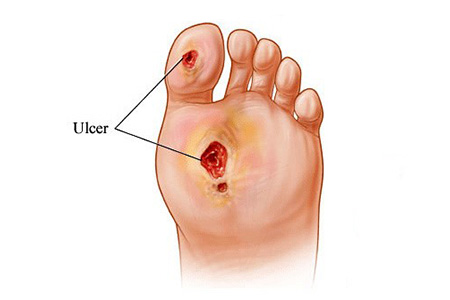How does Diabetes affect feet?
Having diabetes means you’re at much greater risk of developing foot problems.

This is because raised blood glucose, also known as blood sugar, can damage the nerves in your feet, also known as Neuropathy. This can cause tingling, pain (burning or stinging), or weakness in the foot. It can also cause loss of feeling in the foot, so you can injure it and not know it.
Diabetes affects your circulation by causing blood vessels of the foot and leg to narrow and harden which affects the blood supply to your feet. Without a good blood supply, you may have problems with cuts and sores healing. You may also get cramps and pain in your legs or feet.
Diabetes can cause changes in the skin of your foot. At times your foot may become very dry. The skin may peel and crack. The problem is that the nerves that control the oil and moisture in your foot no longer work.
Diabetes can also cause a change in your foot shape. A change in foot shape leads to high-pressure areas under the foot. Calluses occur more often and build up faster on the feet of people with diabetes. Too much callus may mean that you will need therapeutic shoes and inserts. Calluses, if not trimmed, get very thick, break down, and turn into ulcers (open sores).
If you don’t get these problems treated, they could lead to foot ulcers, infections and, at worst, amputations. Most foot problems can be prevented with good, regular foot care.
How Can Firefly Foot and Ankle Clinic Help?
At Firefly Foot and Ankle Clinics we offer neurological and vascular assessments designed specifically for people with Diabetes to ensure good foot health. All our podiatrists can give you advice to keep those feet healthy.
What is Involved in an Assessment?
There are several parts of a foot exam. First, the podiatrist performs a visual inspection, looking for skin colour changes, cuts and any deformities. The podiatrist will then look between your toes, because often infections can start there. The podiatrist will also palpate pulses at key points of the foot to determine the level of circulation. There will also be a test of sensation, where the podiatrist will use a tuning fork and a monofilament to evaluate your awareness of touch and levels of sensation. All of these findings will be recorded and sent to your General Practitioner (GP). The podiatrist will then carry out routine care.

